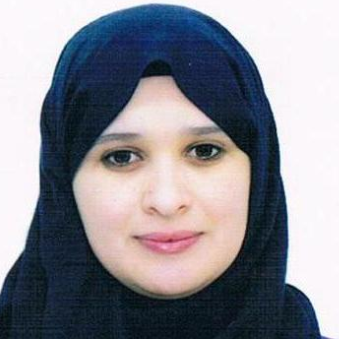International Journal of Intelligent Systems and Applications (IJISA)
IJISA Vol. 9, No. 12, 8 Dec. 2017
Cover page and Table of Contents: PDF (size: 829KB)
Handwritten Character Recognition on Focused on the Segmentation of Character Prototypes in Small Strips
Full Text (PDF, 829KB), PP.29-45
Views: 0 Downloads: 0
Author(s)
Index Terms
Character recognition, feature extraction, off-line handwriting analysis, segmentation
Abstract
The automatic recognition of handwriting is a particularly complex operation. Until now, there is no algorithm able to recognize handwriting without that; there are assumptions to take in advance to facilitate the task of the process. A handwritten text can contain letters lowercase, uppercase letters, characters sticks and digits. Therefore, it is capital to know extract and separate all these different units in order to process them with specific algorithms to their class handwriting.
In this paper, we present a system for unconstrained handwritten text recognition, which allows to achieve this operation thanks to an intelligent segmentation based on an iterative cutting in a multi-script environment.
The results obtained from the experimental protocol reach an "equal error rate" (EER) neighboring to 6%. These calculations were calculated with a relatively small base; however this same rate can be decreased with great bases. Our results are extremely encouraging for the simple reason that our approach is situated in a more general context unlike other approaches which define several non-rigid assumptions; this clearly makes the problem simpler and may make it trivial.
Cite This Paper
Ali Benafia, Smaine Mazouzi, Benafia Sara, "Handwritten Character Recognition on Focused on the Segmentation of Character Prototypes in Small Strips", International Journal of Intelligent Systems and Applications(IJISA), Vol.9, No.12, pp.29-45, 2017. DOI:10.5815/ijisa.2017.12.04
Reference
[1]T. Akiyama et al , (2004) , Handwritten Address Interpretation System Allowing for Non-use of Postal Codes and Omission of Address Elements , Proceedings of the 9th Int’l Workshop on Frontiers in Handwriting Recognition (IWFHR-9- 2004) , IEEE Xplore.
[2]S. Belongie, J. Malik & J. Puzicha. (2008), Shape Matching and Object Recognition Using Shape Context. IEEE Transactions on Pattern Analysis and Machine Intelligence, vol. 24, no. 4, pages 509–522, April 2002.
[3]R. Bertolami and H. Bunke, (2008), Hidden Markov Model Based Ensemble Methods for Offline Handwritten Text Line Recognition, Pattern Recognition, vol. 41, pp3452- 3460.
[4]A. Borkar, M. Hayes, and M. T. Smith, (2010), An efficient method to generate ground truth for evaluating lane detection systems, in Proc. IEEE Int. Conf. Acoust., Speech, Signal Process., pp. 1090–1093.
[5]H. Bunke and K. Riesen (2011). Recent advances in graph-based pattern recognition with applications in document analysis. Pattern Recognition, 44(5):1057–1067.
[6]L. P. Cordella , C. D. Stefano, F.,Fontanella , C. Marrocco ,(2010), A feature selection algorithm for handwritten character recogntion . In Pattern Recgnition(ICPR) , the 19th International conference on , pages 1-4.
[7]G. Costagliola , M. de Rosa and V. Fuccella (2011) , Improving shape context matching for the recognition of sketched Symbols in Proceedings of Int. Conf. Distributed Multimedia Systems.
[8]L. V. Der Maaten , (2009), A new Benchmark dataset for handwritten character recognition , Technical Report TICC TR , Tilburg University.
[9]M. Edwin, W. Putra,(2015),Structural Off-line Handwriting Character Recognition Using Approximate Subgraph Matching and Levenshtein Distance, Procedia Computer Science Elsevier, Vol 59 , Pages 340-349.
[10]A. Fischer, C. Y. Suen, V. Frinken, K. Riesen and H. Bunke (2013) , A fast matching algorithm for graph-based handwriting recognition. In Lecture Note in Computer Science, volume 7887, pages 194–203.
[11]H. Fujisawa, (2009), Robustness design of industrial strength recognition systems, in: B.B. Chaudhuri (Ed.), Digital Document Processing: Major Directions and Recent Advances, Springer, London, 2007, pp. 185-212 , Wuthrich.
[12]S. Hamrouni , N. Vincent , F. Cloppet (2014) , Handwritten and Printed Text Separation: Linearity and Regularity Assessment International Conference Image Analysis and Recognition ICIAR 2014: Image Analysis and Recognition pp 387-394 , DOI: 10.1007/978-3-319-11758-4_42
[13]C. Hilditch (1969) , Linear Skeletons form square cupboards , In B , Mertzer and D. Michie , editors , machine intelligence , vol 4 , chap 22 , pp 403-420 University Edinburgh .
[14]R. Hu, M. Barnard and J. Collomosse, (2010) , Gradient field descriptor for sketch based retrieval and localization. In Proceedings of the 17th Int. Conf. on Image Processing, pages 1025–1028
[15]R. Jain and D. Doermann. (2011). Offline Writer Identification using K-Adjacent Segments. International Conference on Document Analysis and Recognition, pp. 769-773.
[16]A. L. Koerich, A. S. Britto Jr., L. E. S. Oliveira and R. Sabourin , (2006) ,Fusing high- and low-level features for handwritten word recognition. In Proceedings of the 10th Int. Workshop on Frontiers in Handwriting Recognition, pages 151–156.
[17]A. L. Koerich, R. Sabourin, and C. Suen, (2011), Large vocabulary offline handwriting recognition: A survey. Pattern Analysis and Applications, vol 6 pp.97–121.
[18]M. Kumar , M.Jindal , R. Sharma , (2011) , KNN based offline handwritten Gurmukhi character recognition . In Image Information Processing (IcIIP) , The International Conference on , pages 1-4 , .
[19]M.M. Luqman, J-Y. Ramel, J. Lladós, and T. Brouard, ( 2011), Subgraph Spotting through Explicit Graph Embedding: An Application to content spotting in graphic document images, in ICDAR, 2011, pp. 870–874.
[20]T-O. Nguyen, S. Tabbone and O. R. Terrades, (2008) ,Symbol descriptor based on shape context and vector model of information retrieval. In Proceedings of Int. Workshop Document Analysis Systems.
[21]O. K. Oyedotun, E. O. Olaniyi, A. Khashman (2014) , Handwritten Numeral Recognition using Feature Selection approach, International Journal of Intelligent Systems and Applications (IJISA)(MECS Press) , vol.6,no.12,pp.40-47,2014,DOI:10.5815/ijisa.2014.12.06
[22]R. Plamondon ,S.R. Srihari (2000) , on-line and off-line handwriting recognition : a comprehensive survey IEEE transacrtions on pattern analysis and machine intelligence , 22(1) ,63-84 .
[23]H. Pesch (2011), Advancements in Latin script recognition thesis, RWTH Aachen University, Aachen, Germany, Nov. 2011.
[24]T. M. Rath. (2005), Retrieval of handwritten historical document images. PhD thesis, University of Massachusetts Amherst.
[25]R. Rathi, R. Krishan , Pandey , M. Jangid, (2012) ,Offline handwritten Devanagri vowels recognition using KNN classifer . International Journal of Computer Applications , Vol 49 page 11-16 .
[26]M. Rusiñol, D. Aldavert, R. Toledo and J. Lladós , (2011) Browsing heterogeneous document collections by a segmentation-free word spotting method, In Proceedings of the 11th Int. Conf. on Document Analysis and Recognition, pp 63-67.
[27]D. Salvi , J. Zhou , J. Waggoner and S. Wang , (2013), Handwritten text segmentation using longest path algorithm . in Application of computer Vision (WACV) , IEEE Workshop on , pages 505-512 .
[28]L Schomaker, M, Bulacu (2004) , Automatic Writer Identification Using Connected-Component Contours and Edge-Based Features of Uppercase Western Script, vol. 26, pp.787-798, PAMI.
[29]D. V. Sharma , Books Computing , Internet Media, (2012) , Form Processing System for Hand-Filled Forms in Gurmukhi Script Paperback – Import,,
[30]I. Siddiqi and N. Vincent, (2008) , Combining Global and Local Features for Writer Identification, In Proc of 11th Int'l Conference on Frontiers in Handwriting Recognition (ICFHR), Canada.
[31]M. Sreeraj , M. I. Sumam, (2010) k-NN based On-Line Handwritten Character recognition system,First International Conference on Integrated Intelligent Computing.
[32]S. Uchida, R. Ishida, A. Yoshida, W. Cai, and Y. Feng (2012). Character image patterns as big data. In Frontiers in Handwriting Recognition (ICFHR), The 13th International Conference on, pages 479–484.
[33]A. Verma, P. Singh ,N.S. Chaudhari ,Devanagri Handwritten Numeral Recognition using Feature Selection Approach , I.J. Intelligent Systems and Applications, 2014, 12, 40-47.
[34]H. Wei , K. Chen , R. Ingold , and M. Liwicki , (2014) , Hybrid feature selection for historical document layout analysis. In Frontiers in Handwriting Recognition (ICFHR) , The 14th International Conference on , pages 87-92.
[35]A. R. Widiarti (2011) “Comparing Hilditch, Rosenfeld, Zhang-Suen, and Nagen-Draprasad -Wang-Gupta Thinning”, International Scholarly and Scientific Research & Innovation, Vol5, 2011.
[36]S. Wong , S. Uchida and M. Liwicki , (2011), Comparative study of part-based handwritten character recognition methods . In document Analysis and Recognition (ICDAR) , <The 11th International conference on , pages 814-818.
[37]P. Xiu , L. Peng, (2006). ,Offline handwritten arabic character segmentation with probabilistic model. Document Analysis Systems VII, Springer: 402-412.
[38]Q. Xu, L. Lam, & CY. Suen, (2003) , Automatic segmentation and recognition system for handwritten dates on Canadian bank cheques in M. fairhurst & A downto (Edo) , proceedings of the seventh international conference on document analysis and recognition (pp 704-709) Edinburgh UK IEEE Computer Society Press.
[39]http://cgm.cs.mcgill.ca/~godfried/teaching/projects97/az ar/skeleton.html


